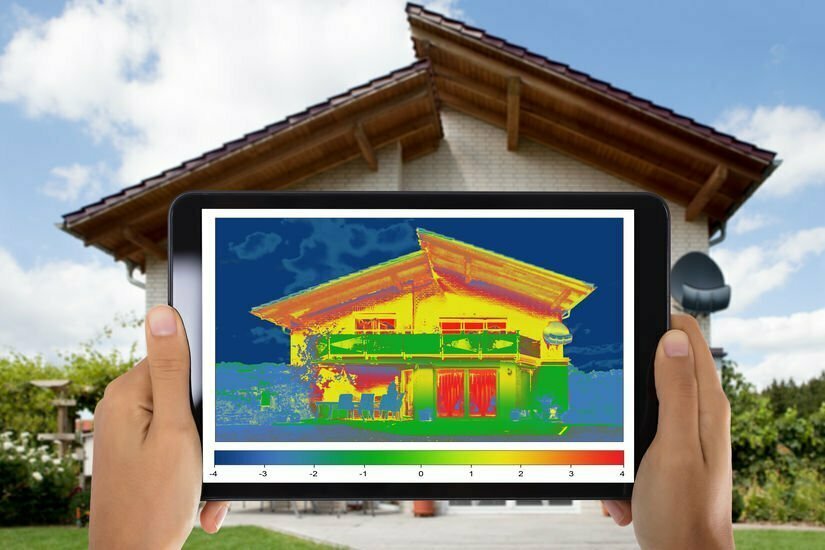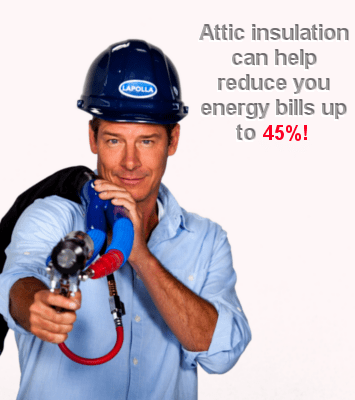Is your home eating up too much energy Or maybe you’re concerned about your carbon footprint and its impact on the environment? Improving your home’s energy efficiency through proper insulation should be a top priority for both environmental and financial reasons, and spray foam insulation offers one of the most effective and durable solutions available today. When professionally installed, it can significantly reduce your heating and cooling costs while also minimizing environmental impact.
Why Energy Efficiency Matters
Every homeowner wants to lower their utility bills and boost energy efficiency. Not only does improved energy efficiency contribute to a healthier and more comfortable indoor living space, but it also has a far-reaching impact on reducing your home’s carbon footprint.
Reducing Environmental Footprint
Enhancing your home’s energy efficiency reduces reliance on fossil fuels for heating and cooling. According to the US Department of Energy, heating and cooling accounts for 43% of home energy use on average. By upgrading insulation, you can cut energy waste and lower emissions. Plus, you can feel good knowing that spray foams contain no ozone-depleting substances.
Cutting Down on Energy Bills
Energy lost through poor insulation will show up on utility bills. But with proper insulation and air sealing, homeowners can reduce heating and cooling costs significantly. As energy costs rise, the savings from an energy-efficient home will grow.
What Is Home Spray Foam Insulation?
Spray foam insulation is applied using pressurized equipment to dispense liquid polyurethane foam between structures like wall studs or roof rafters. As it cures, it expands to form a continuous barrier that seals cracks and gaps. The rigid foam adheres tightly to surfaces and contours to complex shapes.
How Spray Foam Insulation Works
The cornerstone of enhancing a home’s energy efficiency is the building materials, particularly the type of insulation chosen. As a growing revolution in the home improvement industry, spray foam has become a favorite insulation option.
Composition of Spray Foam
Spray foam consists of polymeric materials that cure from liquid precursors into a rigid insulating foam matrix. The precursors consist of methylene diphenyl diisocyanate (MDI) and a polyol resin blend, plus foaming agents and accelerators.
There are two primary types of spray foam — the open-cell foam and the denser closed-cell foam. The difference between the two lies in the cell structure of the resulting foam, with open-cell spray foam allowing more air infiltration.
Expansion and Solidification
When the spray foam components are mixed and dispensed using high-pressure spray equipment, a chemical reaction occurs, causing rapid expansion and solidification into rigid cured foam. The curing process can produce a closed cell foam or open cell foam structure based on the particular formulation.
Insulating Properties and Thermal Resistance
The cured foam contains millions of tiny cells filled with trapped gas, giving it strong insulating properties. These cells prevent heat transfer and reduce air infiltration. The actual savings numbers may vary based on the layout of the home and the surrounding climate.
Lifespan and Maintenance of Spray Foam Insulation
Another attractive characteristic of spray foam insulation is its longevity. The foam doesn’t sag or deteriorate over time, unlike many traditional building materials, making it a great long-term investment. However, a long lifespan comes with proper installation.
Expected Duration of Spray Foam
When properly installed by qualified insulation specialists like the experts at Cincinnati RetroFoam, the life expectancy of spray foam insulation could be 50 years or longer. It’s worth noting that the lifespan may vary depending on factors like the type of foam used and the applied density of the spray foam, among other things.
Handling Repairs and Renovations
Making home renovations with spray foam insulation can be tricky. Being a solid structure, the insulation doesn’t allow for easy upgrades or alterations and may demand the expertise of an insulation contractor for any changes.
If renovations require removing sections of spray foam, it should be done carefully to minimize damage to the remaining material.
Benefits of Spray Foam Insulation
When investing in insulation for your home, spray foam insulation ranks among the best for enhancing home energy efficiency. But the benefits of spray foam go beyond lowering your utility bills.
Enhancing Energy Efficiency
The most impressive quality of spray foam insulation is its ability to provide a seamless, consistent insulation layer without gaps or voids. As it cures, the expanding foam sticks tightly to surfaces, sealing cracks and filling cavities. This results in enhanced energy efficiency compared to traditional insulation, which can settle over time.
By preventing air leakage and heat transfer far better than other insulation types, spray foam insulation can reduce home energy usage and lower heating and cooling bills significantly.
Reducing Heat Transfer
The structure of cured spray foam contains millions of tiny air pockets trapped within the foam matrix. These air cells provide tremendous resistance to conductive heat transfer through building cavities.
The rigid foam insulation also adheres completely to surrounding surfaces. This total contact eliminates gaps that would otherwise allow heat loss through convection currents.
The composition of most spray foams also resists absorption of moisture, which can degrade insulating properties over time. This moisture resistance maximizes long-term thermal performance.
Controlling Moisture and Air Infiltration
In addition to its insulating properties, spray foam insulation also acts as an air barrier once cured. The foam seals cracks, gaps, and holes that would otherwise allow outside air to infiltrate into interior spaces. Minimizing this air infiltration can significantly reduce heat and cooling transmission losses.
By protecting against moisture intrusion and regulating humidity, spray foam also helps control mold, mildew, and condensation within building cavities, providing added energy savings and durability.
Health and Comfort Benefits
Besides energy efficiency, home spray foam insulation also brings along plenty of comfort and health benefits. The dense cell structure of spray foam not only increases the structural strength of your home but also contributes to better indoor air quality.
Improving Indoor Air Quality
The air-sealing qualities of spray foam insulation limit pathways where outdoor allergens, pollutants, and moisture can penetrate into living spaces. By controlling humidity and sealing cracks in the building envelope, spray foam inhibits the growth of mold, mildew, dust mites, and other allergens. This creates a healthier indoor air environment.
Preventing Mold Growth
Mold growth within building cavities results from excess moisture accumulation. The structure and low vapor permeability of quality spray foam insulation prevents water vapor from penetrating into attics, walls, and other enclosed spaces.
This stringent moisture control provided by the adhered foam barrier inhibits the growth of mold, mildew, and wood rot that could otherwise occur inside concealed structural cavities when humidity levels rise. Keeping building materials dry and free from mold enhances air quality while protecting the home’s integrity.
Noise Reduction
By damping vibration and sealing gaps in the home, spray foam insulation provides excellent noise control to make interior spaces more peaceful. Homeowners often notice a remarkable difference in sound-deadening after upgrading walls with spray foam insulation.
Making the Switch to Spray Foam Insulation
Upgrading attic and exterior walls to spray foam insulation can deliver serious savings on home heating and cooling expenses while also making the home more comfortable.
To reap these rewards, it’s important to choose a qualified insulation contractor experienced in properly installing spray foam who follows industry best practices concerning surface prep, ventilation, equipment settings, application techniques, and thickness recommendations based on your climate. And there’s no better choice for homeowners than Cincinnati RetroFoam.
Home Spray Foam Insulation from Cincinnati RetroFoam
For homeowners who want to enhance energy efficiency, Cincinnati RetroFoam offers unbeatable professional spray foam installation services. Our expert team provides attic spraying and wall cavity filling to match your specific project needs. We follow strict industry best practices for surface prep, ventilation, equipment settings, and thickness recommendations during application. As a local company, we understand how to optimize spray foam for your unique climate conditions. Contact Cincinnati RetroFoam today to upgrade your home with high-performing spray foam insulation.
FAQs
Does spray foam insulation need additional vapor barriers?
Spray foam insulation does not require additional vapor barriers when installed properly. The closed-cell structure of spray foam insulation makes it inherently resistant to moisture penetration, acting as both an insulation and vapor barrier. The effectiveness of spray foam as a vapor barrier depends on the type, thickness, and quality of installation.
Is spray foam insulation flammable?
Spray foam insulation is not inherently flammable. Once cured, standard polyurethane and polyisocyanurate spray foams are typically classified as combustible but not readily flammable. Their chemical makeup and structure make them difficult to ignite and slow to burn without an external heat source. However, factors like proper installation method, foam density, chemical composition, and exposure to heat and oxygen can impact flammability. Be sure to always use a qualified spray foam installation service to ensure safe application.
How long does spray foam let off gas after installation?
Spray foam insulation can off-gas after installation as the chemicals used to make it fully cure and solidify. It’s recommended to ventilate the area well during this time by opening windows or using fans. The amount of time for off-gassing depends on the type of insulation used. Some tips are to avoid being present during and immediately after the installation. Cincinnati RetroFoam uses spray foam insulation that has low VOC material. The re-entry time is 24 hours after the spray foam is installed. Follow any specific guidance from the foam installer on ventilation and re-occupancy times.


